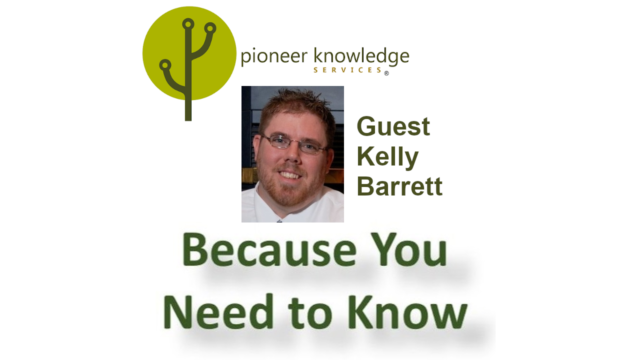
The emerging concept of boundary objects in knowledge management
In a newly published paper1 in the open access Electronic Journal of Knowledge Management (EJKM), a team of researchers from Sun Yat-sen University and Central China Normal University carry out a systematic review and critical analysis of research in regard to boundary objects use in the context of the knowledge management (KM).
The review and critical analysis included investigating the following questions relevant to KM practice:
- What artefacts are theorized as boundary objects in KM research?
- What is the role of boundary objects use in KM practices?
- Which factors affect boundary objects in KM practices?
The review included journal articles and conference papers written in English and published between 2008 and 2018. The systematic search produced 513 records, and after performing specific checks and applying inclusion and exclusion criteria, finally 33 studies were selected for critical analysis.
What are boundary objects, and why are they important?
The research team advises that the artefacts that individuals use to share, exchange, integrate, and create new knowledge can be referred to as boundary objects. These enable people to learn from each other, and to act as agents in co-generating, bridging and disrupting understanding.
The concept of boundary objects arose from a 1989 study2 of information practices at Berkeley’s Museum of Vertebrate Zoology. The authors of this study described boundary objects as translation devices capable of spanning intersecting social worlds, thereby helping to pave the way for effective communication, collaboration, and cooperation. The study grouped boundary objects into four categories: namely, (1) repositories (e.g., ordered piles of objects), (2) ideal types (e.g., diagrams), (3) coincident boundaries (e.g.,objects with the same boundaries but different contents), and (4) standardized forms (e.g., common communication methods).
A 2002 study3 then assigned three types of knowledge boundary to these categories of boundary object: (1) syntactic, (2) semantic, and (3) pragmatic. In a syntactic approach to boundaries, once a syntax (e.g., a hexadecimal zero or one as in software code) is shared and stable across a given boundary, it is sufficient and the processing of information becomes the primary concern. A semantic approach recognizes that even if a common syntax or language is present, interpretations are often different which make communication and collaboration difficult. The pragmatic approach highlights the importance of understanding the consequences that exist between things that are different and dependent on each other.
Boundary objects help to create particular contexts that help to translate, transfer and transform knowledge within a community of practice. Knowledge transfer is simply the processing of information, whereas knowledge translation is referred to as developing a common meaning to overcome interpretive differences between contexts. The knowledge transformation process refers to the conversion of knowledge into action and its application to organisational routines.
Boundary objects, whether concrete or abstract, have different implications in different social worlds; however, the objects retain a common identity across the boundaries of these worlds. Boundary objects are characterised according to three dimensions: (1) interpretive flexibility, (2) the material/organisational structure, and (3) scale. In practice, researchers have focused mostly on interpretive flexibility; the other two dimensions have been less frequently discussed. More importantly, not every object is a boundary object. So, scale and scope should be considered in determining whether an entity functions as a boundary object in a given situation or not. Furthermore, it may be possible that a boundary object works effectively in one context, but less well in a similar capacity in another context; and may even act as a hindrance to the sharing or transfer of knowledge. Therefore, it is critically important to differentiate between ‘designated’ and ‘in use’ boundary objects for specific context, and to select objects with reference to usability and adaptability to local needs.
Boundary objects enhance communication among groups and help them to access knowledge that would otherwise be inaccessible. They are considered connectors between different groups and within communities, and allow them to improve their practices by sharing knowledge. Moreover, boundary objects contribute to learning in communities where people have diverse viewpoints and ways of working. Because of the effective role they play in communication and collaboration of information and knowledge sharing, these objects have received the attention of researchers from the field of organisational learning.
In sum, boundary objects successfully contribute to the development of shared understandings, knowledge creation, and innovative thinking among diverse groups. More specifically, their application is quite visible in various functions within organisations, such as computer-assisted tools, drawings, sets of rules, research projects, and organisational blogs.
The research team recommends that, in order to get maximum benefit from the power of boundary objects and to strengthen their role, it is important for organisations to identify, create and facilitate their use in KM.
In the time since the 1989 Berkeley Museum of Vertebrate Zoology study, the notion of boundary objects has become increasingly important in exploring the interaction between individuals and organisations. illustrating this, has received considerable attention from information and knowledge practices researchers. According to Google Scholar, the Berkeley study had been cited more than 6300 times by 2016, and recently, the citation of the paper has reached over 9600. The research team alerts that this citation trend shows that research on the application of boundary objects in the information and knowledge landscape is increasing.
What artefacts are theorized as boundary objects in KM research?
The 33 selected studies were analysed by the research team to identify the artefacts theorized as boundary objects in KM research. They report that the boundary objects consisted of physical and virtual objects, and of activities, and are:
- Diagrams, visual metaphors, charts, sketches
- Referrals, laboratory reports, instructions for specimen taking and specimen handling, routines and rules prototypes or practical tests, standards and documentation
- Excel workbooks
- Process management model
- Repositories, standardized forms and methods objects, models, and maps, figurative language and symbolism, nonverbal expressions, and visionary objects
- Computer-assisted collaborative tools
- Coding, seminars and forums, and patient files
- Software specification and project management tools
- Tasks for students on work placement
- Physical repositories, reports, databases, standardized forms, objects, models and maps, diagram, Gantt charts, milestone charts, Program Evaluation Review Technique (PERT) charts, project timelines drawings, sketches, figurative language and symbolism, conceptual objects, visionary objects, and nonverbal expressions
- Decision support systems
- Virtual objects
- Email and instant messaging
- Operation research models
- Physical repositories, reports, databases, standardized forms, objects, models and maps, diagram, Gantt charts, milestone charts, PERT charts, project timelines drawings, sketches, figurative language and symbolism, conceptual objects, visionary objects, and non-verbal expressions
- Sketches, drawings, resumes, descriptions of customer wishes, spreadsheets, and economic calculations
- Animated stories, images, documents, symbols, digital archives, storyboards, and records
- Digital and physical modes of visualizing
- Standardized forms, a prototype, and a collaborative workspace
- Model representations and conceptual artefacts
- Management plans, a template for a management plan, an interim plan
- Presentation, metaphors, memos, pictures and blueprints, and factory tour
- Building information modelling
- Value models
- Digital online platform
- Scorecard
- Organisational blogs
- Agent based models
- Development planning
- Wadden Sea Barometer and the Waddenhouse Deliberation ranking
- Signature
- Ecosystem services framework.
What is the role of boundary objects use in KM practices?
The research team reports that their critical analysis confirms that boundary objects support transfer, translation, and transformation of knowledge between and among diverse social groups. The boundary objects are categorized under four knowledge boundaries: syntactic, semantic, pragmatic, and metaphoric. The literature puts forward view that under these knowledge boundaries, the boundary objects played various roles, such as mediator, facilitator, enabler, and platform during knowledge management practices in organisations and communities.
The roles of mediator, platform, and facilitator as identified in the literature are explained by the research team in the following subsections.
Boundary object as mediator
A key attribute of a boundary object reported in the literature is its role as a mediator. Boundary objects allow diverse actors to communicate and cooperate with each other. A case study based on a health information system in East Africa found that a scorecard developed as a tool for managing maternal and child health acts as mediator for communication and knowledge sharing amongst the collaborating organisations in different countries . The scorecard helped to overcome country differences and facilitated shared understanding between a variety of healthcare providers and recipients. These findings could also be useful in identifying unintended challenges to, or benefits of, the adoption of new knowledge according to specific country guidelines and practices.
In collaborative activities where actors have diverse knowledge and interests, boundary objects mediate knowledge exchange through their support of boundary activities. However, for an artefact to mediate collaborative activities between actors from different social worlds, there is a need to consider individual differences, goals and motivations connected with those activities.
Boundary object as platform
Boundary objects are evolving in nature, and their use is increasing over time. It is suggested that social media platforms function as intra-organisational boundary objects because they enable staff posted at various geographical locations and operating at different grades to share knowledge and develop new insights.
However, boundary objects can operate not only across geographic and social boundaries, but also across boundaries arising from different competencies and backgrounds. It was found that within the context of product-service systems, the value models that formed part of the design process helped to facilitate cross-boundary discussion in the early phases of the design process, and to provide a common platform for knowledge sharing within a cross functional team.
From another aspect, in cross boundary knowledge sharing, the role of boundary objects has been studied through the lens of translation, transformation, and transcendence in the use and production of innovative knowledge during the course of cooperation. It was found that the way that boundary objects used in knowledge sharing involve the transformation of conflicts into creativity ultimately resulted in transcendence of the artefacts’ symbolic meaning and attainment of their cultural meaning. Transcendence involves the use of boundary objects to establish trust, tolerate conflict, and achieve a creative state. Boundary objects used for this purpose included animation technology, laws and regulations, and conference records.
Other good examples of boundary objects contributing to the conversion of tacit knowledge into explicit knowledge can be found in areas as diverse as agriculture and policing. A decision support system for precision dairy farming in Australia facilitated knowledge sharing among farmers. Furthermore, boundary object role was highlighted as platform in a knowledge visualization process. In this context, the findings suggested that organisations are required to pay special attention while selecting an artefact as boundary object and should also consider its compatibility with the visualization software.
Boundary object as facilitator
It is suggested that technology has the potential to transform social interactions and collaborative work if it addresses the needs of its users. The use of visual models to facilitate knowledge sharing among different social actors is supported, and it is argued that these models allow knowledge to be shared across and between disparate stakeholder communities.
In regard to the role of technology in facilitating transformational learning, it was found that boundary objects facilitate knowledge sharing in collaborative work by breaking socio-cognitive barriers. Boundary objects serve many purposes in an IT project design by encouraging cross-boundary discussions. These objects contribute to innovative content by helping to negotiate hardware versus service trade-offs. They can also reduce the amount of re-working arising from misinterpretation of requirements.
In the construction industry, it was noted that boundary objects promote the knowledge sharing needed for collaborative activities such as building information modelling.
Problems arising from cross-cultural difference can also be addressed, in part, with boundary objects. One study examined the role of software specification and project management tools in a Jamaican-Indian software team. It was reported that, in some situations, use of boundary objects can be become a focus for conflict, and so reduce knowledge sharing. For example, in software development, the requirements specification and flexible use of timelines contributed to the exchange of tacit knowledge in the early phases of development. Later, however, these project management tools decreased attention on the collaboration needed in expertise coordination around the spec and led to an adverse impact limiting team interactions among themselves and with users.
Another study explored the role of wikis, email and instant messages, teleconference interactions, and face-to-face interactions as boundary spanners. In this capacity, such media facilitate knowledge sharing, but the nature of the influence varies depending on the medium being used. As a result, apart from identifying the role of boundary objects, it is also necessary to ensure that the right boundary object for a particular set of circumstances is selected.
Virtual boundary objects have been found to play a role in building development. The abstract representation of an idea in the form of drawings, spreadsheets, and economic calculations helps clients and construction companies to exchange ideas, leading to improved decisions. Other virtual boundary objects include documents of communications, negotiations and agreements at the beginning of the commercialization cycle, and these may act as a structural intervention to decrease the likelihood of inter-occupational and inter-organisational miscommunication. Virtual boundary objects in the form of conceptual visualizations, for example, diagrams, visual metaphors, charts, and sketches, also support collaborative knowledge work and facilitate creation and the sharing of knowledge within teams. Another example is an Excel workbook, which presents knowledge across occupations and provides memories that span projects.
Which factors affect boundary objects in KM practices?
The research team reports that many of the studies that they analysed also mentioned factors which affect the role of boundary objects in KM practices.
Several authors mentioned that these objects cannot always be used in isolation, but need to be linked with each other to mediate in the knowledge exchange or transfer process. For example, team members in an organisation regularly exchange knowledge about relevant and interesting aspects of their work. These exchanges may involve information generated from multiple processes that require formal and/or informal interactions with other units of organisations.
Moreover, multiple organisational factors can affect the formation and use of boundary objects. One study discussed the importance of supportive leadership and motivations for transformation in objects, while factors that might adversely affect the use of boundary objects include cross-culture differences, negative image, lack of professional relationships among employees, and an atmosphere of mistrust.
Often, a relevant artefact is a standardized procedure made tangible in some way. However, an important consideration when using these standardized procedures is to create an appropriate link between organisational activities and KM processes. Otherwise, KM effort will result in the waste of time and resources.
The representational capacity of boundary objects is essential if they are to perform their functions. Boundary objects also need to have enough common structure to ensure consistency, but cannot be too structured, as they need to adapt to local needs. Therefore, it is important to identify, create and facilitate the use of boundary objects specifically in relation to their environment, people and type of knowledge. Moreover, human brokers play an important part in using boundary objects to mediate in knowledge transfer. The role of brokers is also important in relation to the impact of boundary objects in knowledge sharing.
How can boundary objects be applied in KM practices?
The research team advises that each category of boundary object performs differently, and the choice of artefact working as a boundary object depends upon on the context and nature of interactions.
Collaborative activities take place both inside organisations (among members), and with outside partners, customers and suppliers. During these activities, actors communicate and exchange ideas and integrate professional knowledge, experience and skills into their business functions. Some boundary objects have been found to facilitate this sharing process, not only across functional boundaries, but also across geographical ones.
Where boundary objects enhance communication among actors, it is important to identify them and to encourage their use, taking into consideration their relation to their environment, to people and to type of knowledge. It is also suggested that consideration should also be given to circumstances which may lead to boundary objects limiting knowledge sharing.
Boundary objects have been found to work differently, according to context. Their different functions have been classified as (1) transference, (2) translation, (3) transformation, and (4) transcendence. Actors operating within an organisation whose exchange of knowledge leads to a mutual understanding in which interpretations are aligned, have overcome syntactic boundaries. However, in activities where actors from different social worlds collaborate, the simple transfer of knowledge is not enough to achieve the collaborative goals of organisations and external communities. In this type of situation, there is a need to recognize the difference in the agents’ understanding and world views, and to select and employ boundary objects that can overcome semantic boundaries by acting as “translation devices”.
However, to promote innovation, it is insufficient simply to span syntactic and semantic boundaries. To bridge different interests within and between organisations, and diverse perceptions of key issues, it is necessary to find means of overcoming pragmatic and metaphoric boundaries. Often, various types of boundary objects come together to enable productive interactions and exchanges. Sometimes, an artefact on its own will be ineffective, but, in combination with others, it becomes part of a cluster that forms a boundary object. These clusters emerge from the interplay between artefacts, uses, practices, and knowledge.
The research exposed the multiple factors affect the use and usability of boundary objects within and across organisations. Organisational factors that can have an impact on the formation and use of boundary objects include environmental factors, such as supportive leadership, level of motivation, cross-culture differences, the quality of professional relationships, and the atmosphere and culture of organisations using the objects. In addition, the nature of a boundary object itself is important. It must have enough common structure to ensure consistency, but must be sufficiently flexible to adapt to local needs.
Additionally, when a boundary object is weakly structured, it can play a significant role in the sharing of tacit knowledge and understanding between the people involved. By contrast, when a boundary object is strongly structured, it can function as a coordinating mechanism in explicit knowledge communication. By implication, when a boundary object becomes more structured, it contributes less to creativity and to the communication of tacit knowledge.
The application of boundary objects is supported by brokers who help to ensure the objects’ performance. The interplay between activities and boundary objects creates spaces within which actors share, transfer and translate their knowledge. In these spaces, actors learn from each others’ interests and perspectives. Similarly, brokers play an important role in using boundary objects to mediate in the transfer of knowledge. The role of brokers is also important in relation to the impact of boundary objects on knowledge sharing. They have the power to make information available to members of a particular community and can influence the direction of the community by controlling the flow of information.
Article source: The paper Application of Boundary Objects in Knowledge Management Research: A Review is licensed under CC BY-ND 4.0.
Header image source: Gerd Altman on Pixabay, Public Domain.
References:
- Kanwal, S., Baptista Nunes, M., Arif, M., Hui, C., and Madden A. D. (2019). Application of Boundary Objects in Knowledge Management Research: A Review. Electronic Journal of Knowledge Management, 17(2), pp. 100-113. ↩
- Star, S. L., & Griesemer, J. R. (1989). Institutional ecology, translations’ and boundary objects: Amateurs and professionals in Berkeley’s Museum of Vertebrate Zoology, 1907-39. Social studies of science, 19(3), 387-420. ↩
- Carlile, P. R. (2002). A pragmatic view of knowledge and boundaries: Boundary objects in new product development. Organization science, 13(4), 442-455. ↩
Also published on Medium.






